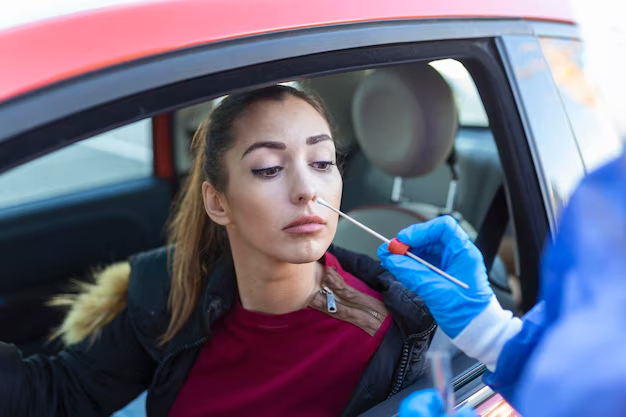Navigating the Roads After Cataract Surgery: When and How to Drive Safely
Cataract surgery is a common procedure that can significantly improve vision. However, one of the most pressing questions many patients have post-surgery is, "When can I drive again?" If you're preparing for or recovering from cataract surgery, it's crucial to understand the guidelines and best practices for driving. In this comprehensive guide, we’ll explore when it might be safe to drive, essential considerations, and tips for a smooth transition back onto the roads.
Understanding Cataract Surgery and Its Impact on Vision
Cataract surgery involves the removal of the eye’s cloudy lens and its replacement with an artificial one. This procedure can dramatically enhance your ability to see colors vividly, drive at night, and perform daily tasks with greater ease.
Key Benefits of Cataract Surgery
- Improved Clarity: Colors may appear more vibrant, and details become clearer.
- Enhanced Night Vision: Glare from headlights and streetlights are significantly reduced.
- Higher Confidence: Better vision can lead to improved independence and quality of life.
When Can You Safely Drive After Cataract Surgery?
Immediate Post-Surgery Phase
After your cataract surgery, you'll need a friend or family member to drive you home. This is because your vision may still be blurry as your eyes heal and adjust to the new lens. It’s essential to prioritize safety during this time.
General Guidelines for Driving Post-Surgery
Initial Recovery Period: Doctors generally recommend not driving for at least 24 to 48 hours post-surgery. Your vision needs time to stabilize, and you should listen to your body and any symptoms you experience.
Individual Differences: Recovery can vary from person to person. Some may feel ready to drive sooner, while others need more time. Always adhere to personalized advice provided by your healthcare provider.
Legal Considerations: Make sure you meet the legal vision requirements for driving in your area. This often involves a check-up post-surgery to ensure you're legally fit to drive.
Listening to Your Surgeon's Advice
Your surgeon will provide tailored guidance based on your specific situation. They might recommend follow-up appointments to evaluate your vision and offer the green light for driving.
Factors Influencing Post-Surgery Driving Readiness
Vision Adjustments
- Depth Perception: Adjustments to depth perception can affect how you judge distances on the road.
- Eye Sensitivity: Some may experience sensitivity to light, making driving uncomfortable in certain conditions, like bright sunlight.
Medications and Anesthetics
- Residual Effects: Any remaining anesthetic or sedative effects can impair your ability to drive safely.
- Eye Drops: Follow instructions regarding eye drops, as they can impact vision shortly after application but are crucial for healing.
Practical Tips for Transitioning Back to Driving
Step by Step Approach
- Start Small: Begin with short drives during optimal daylight when traffic is minimal to rebuild confidence.
- Adjust Your Environment: Wear sunglasses if you're sensitive to light and ensure mirrors and seats are adjusted properly for your comfort and safety.
Monitoring Your Comfort and Readiness
- Symptoms to Watch: Blurred vision, halos, or pain can indicate the need for further healing before driving.
- Regular Check-ups: Attend follow-up appointments with your eye doctor to ensure your vision remains fit for driving.
Proactive Strategies
- Vision Tests: Consider visiting an optometrist for a vision test if you're unsure about your driving readiness.
- Alternative Transportation: Until you feel fully confident, leaning on alternative transportation options is wise.
Common Concerns and FAQs About Driving Post-Cataract Surgery
Can Both Eyes Be Operated On at the Same Time?
Most surgeons prefer operating on one eye at a time, allowing for recovery and the ability to function with the other eye.
Is Night Driving Affected?
While many experience improved night vision, it’s advised to test night driving conditions carefully and incrementally.
How Do I Handle Glare While Driving?
Investing in high-quality sunglasses and using vehicle sun visors can help manage glare issues effectively.
Checklist for Safe Driving Resumption 🚗
- ✅ Consultation: Ensure your surgeon confirms your readiness to drive.
- 👓 Vision Check: Undergo a vision test to confirm meeting legal driving vision requirements.
- 🌞 Sunglasses: Use protective eyewear to combat glare and light sensitivity.
- 🚦 Short Drives: Take short trips in familiar areas before attempting longer distances.
- 🗓 Follow-Up: Keep all recommended follow-up appointments with your eye doctor to track recovery progress.
Final Thoughts: Preparing for a Successful Return to the Road
Cataract surgery can offer incredible benefits for visual clarity, and most patients eagerly anticipate the freedom to drive again. By adhering to these guidelines and listening to your body's cues, you can resume driving safely and confidently. Remember, your health and safety are paramount, so take all necessary precautions and consult with your healthcare provider if you're uncertain about any symptoms or side effects.
Returning to the wheel post-cataract surgery doesn't have to be daunting—with the right preparation, you'll be back to navigating the roads with clarity and comfort.
